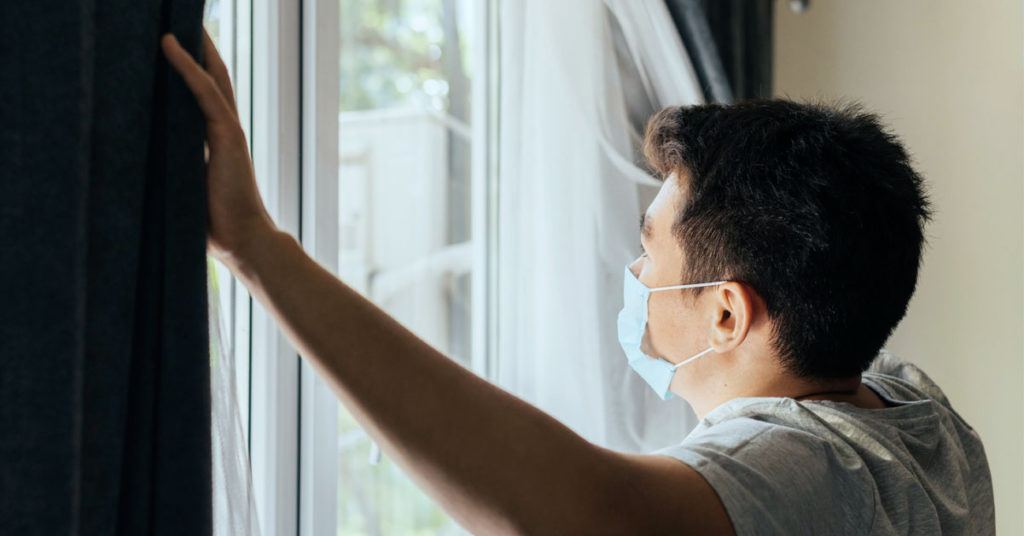Home Care for COVID-19 Patients

Introduction
Fear has never become so real when recent reports show that COVID-19 has infected more families and most hospitals are getting full. Translation? The COVID-19 battleground is now in our home.
While there are still further studies regarding the medical management of moderate, severe and critical COVID-19 patients, home care could be considered for low-risk individuals who are asymptomatic or have mild symptoms.
For the Caregiver
Fear has never become so real when recent reports show that COVID-19 has infected more families and most hospitals are getting full. Translation? The COVID-19 battleground is now in our home.
If possible, eating utensils should be disposable. If not, eating utensils must be cleaned using disposable gloves. Faucet, handles, kitchen sink and drains can be cleaned using disinfectant sprays and can also be included in the general cleaning at the end of the day. As for washing of clothes, do not shake the laundry and separate the clothes of the patient. Dry the clothes in open sunlight if possible.
It is best to sustain a well-ventilated environment for good air circulation. Make sure to wear the mask properly at all times except for obvious reasons like eating. For hygiene’s sake, please do not touch the mask once used. Change the mask immediately when dirty and soiled. N95 masks are still recommended but have insufficient supply as these are used in the hospital premises. Disposable masks are advised for personal use over cloth masks. Options to wear double masks with disposable masks on the outer part and cloth masks inside are okay as long as cloth masks are properly washed after use. Masks should not be placed on infants under two years old. Masks should also not be used by anyone who has trouble breathing or is not able to remove the covering without help.
Hand washing is still the top standard precautionary measure to prevent any kind of communicable diseases whether be in the hospital premises or at home. Wash hands with soap and running water before and after eating. Hand washing is also advisable for the use of comfort room, possible contact with a household member, or contact with any personal belongings and utensils. This hand washing must be strictly observed by the caretaker of a COVID-19 patient. Hand washing using alcohol-based hand rub can also be done if available. Disposable paper towels are also recommended to use after hand washing. If not, COVID-19 patient and the caretaker should have their own personal cloth to use and change immediately when soiled.
Movements and Contacts
Asymptomatic to mild cases of COVID-19 can be managed at home with the basic knowledge of general supportive symptomatic treatment. According to the World Health Organization, patients who do not qualify for home care are those who are above 60 years old, smokers, and/or obese. A sick person also cannot qualify for home care if he or she has non-communicable diseases like cardiovascular disease, diabetes mellitus, chronic lung disease, chronic kidney disease, immunosuppression and cancer.
We are aware by now that COVID-19 spreads between people who are within about 6 feet through respiratory droplets. This close-contact spread is created when someone talks, coughs or sneezes. There must be a separate room between the COVID-19 patient and the family members. Physical distancing guidelines must be followed even indoors. If the patient cannot have a separate room, make sure that there is a good air flow inside the house. Everyone must maintain a 1-meter distance apart from the COVID-19 patient. Household members are advised not to eat together. The sick person should eat or be fed in their room, if possible.
It is also advisable to limit the movement of household members sharing the one house. You must limit the interaction of the person with the pets. Infected dogs and cats carry greater risk to roam around people. No visitors allowed, especially who are at higher risk for severe illness. Caregivers of the sick family member should stay home, except in limited circumstances.
Conclusion
There are still a number of home quarantine measures to be done for so as long as infection prevention and awareness is considered. Since COVID-19 symptoms mimic other flu-related illnesses, same modality of management can be done. On top it all, maintain healthy habits for a healthy lifestyle – eat nutritious food with daily dose of vitamins, adequate hydration and a good amount of sleep.
We can also look for emergency warning signs- blue, gray, or pale-colored lips, nail beds or skin, depending on normal tone, inability to wake or stay awake, new confusion, persistent pain or pressure in the chest, and trouble breathing. Have the doctor’s contact number at hand. If you are not sure about the symptoms, the Center for Disease Control and Prevention has a self-checker tool. You may also contact MyPocketDoctor through their Facebook page and/or chat with their agents on their website www.mypocketdoctor.com.
References:
1) www.cdc.gov
2) www.who.int
3) www.philstar.com
